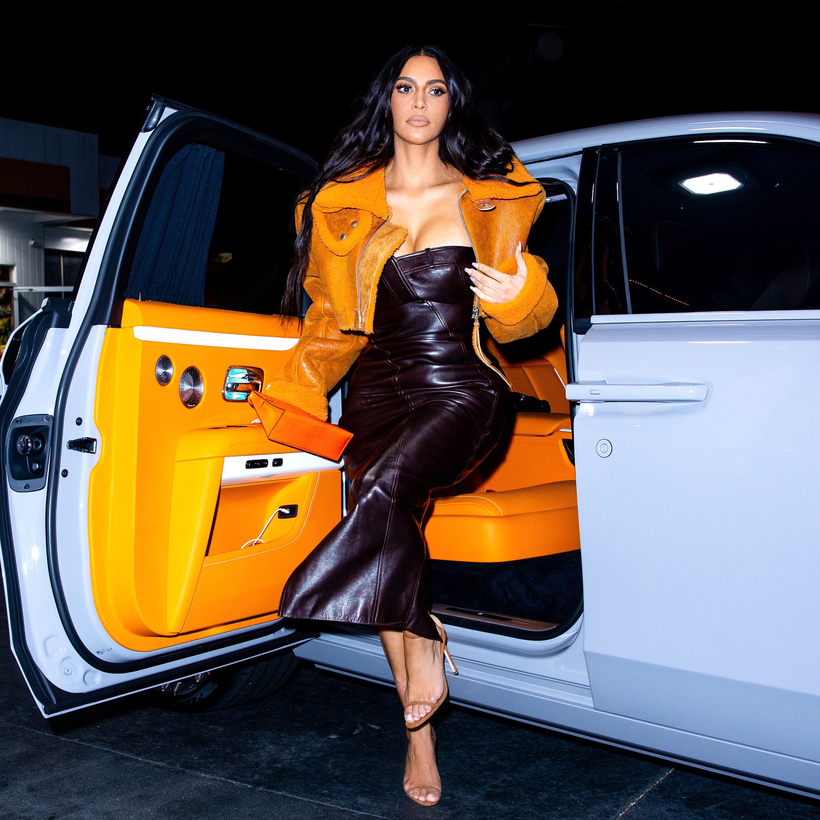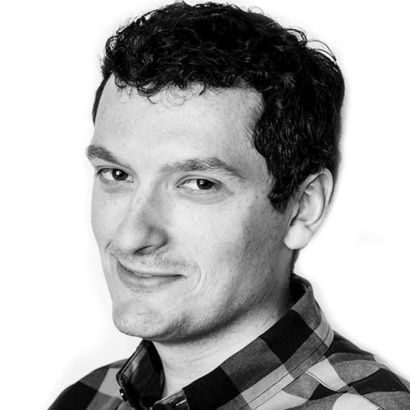It would have been reasonable to predict that the pandemic might have dealt the final blow to the paparazzi.
Even before the coronavirus, the feeding frenzy surrounding that first shot of Diana’s body in the Parisian tunnel she crashed in, of Britney’s shaved head, or of Kristen Stewart cheating on Robert Pattinson with married director Rupert Sanders already felt like a remnant of the past. Stars had started communicating and confessing directly to their fans (with the version of the story they liked best) on social media.
Add to that the mask mandate, and you have the possibility of a paparazzo’s worst nightmare incarnate: Meghan Markle walking into a grocery store without a single person recognizing her.
But lucky for anyone addicted to Us Weekly, or the Daily Mail, or the New York Post, or Deuxmoi, or Comments by Celebs … the paparazzi haven’t gone away.
“Getting the shot that the celebrity didn’t want used to be the ultimate—that’s what everybody was vying for,” says Emma Diamond, who, with Julie Kramer, runs the popular Instagram account Comments by Celebs. Now the rules of the game have changed. “People are realizing that that doesn’t have the same power,” Diamond says.
But there is still money to be had for these images. People still want to see paparazzi shots, just not the ones they’ll feel guilty looking at. And stars are still using the paparazzi for their own ends—even if they’re saying the opposite in public. The coronavirus notwithstanding, the strange, symbiotic dance between celebrities and the paparazzi is as alive and fruitful as ever.
When All the World’s a Stage
Giles Harrison, who runs the photo agency London Entertainment Group and has worked as a paparazzi photographer for 26 years, attributes the industry’s longevity to the stars themselves. Celebrities still have products to promote or narratives to sell, and being snapped by the paparazzi continues to be an excellent, efficient way to achieve these goals.
“Nine times out of 10, I find [celebrities seek out the paparazzi] because they have something to promote,” Harrison says. “So they got a new album coming out, or they have a show, or there’s news they just broke up with someone so they’re trying to look like they’re not miserable.”
He adds, “It’s all about promoting your product and promoting you. Because we help keep you in the eye.”

For proof that celebrities are masters of the game, look no further than a recent favorite paparazzi couple: Jennifer Lopez and Ben Affleck. Their every hand-holding and sly glance is seemingly as much a jab at Lopez’s recent ex, Alex Rodriguez—who was rumored to have cheated on her, a narrative the popular celebrity-gossip Instagram account Deuxmoi presciently predicted Lopez would have the last word on—as it is a shrewd P.R. push on both Lopez’s and Affleck’s parts.
Post-J.Lo/A-Rod breakup, the world started daydreaming of a reunion between Lopez and Affleck, who had dated in the early 2000s. The paparazzi helped make the re-united couple the world’s darling.
A few newly formed couples, such as Megan Fox and Machine Gun Kelly, and Kourtney Kardashian and Travis Barker, are photographed seemingly every day in virtually every possible form of P.D.A., and have seen their stars, both jointly and individually, rise. Sandra Lee—just a few hours before her recent ex, Andrew Cuomo, resigned as governor—was snapped with her new fiancé in the French Riviera, about as far from Albany, and the scandal, as humanly possible.
“It’s all about promoting your product and promoting you. Because we help keep you in the eye.”
Harrison says there are celebrities who still regularly work with him to arrange photographs. “I work with publicists and P.R.’s and stuff like that to do controlled paparazzi shoots,” he says. Nowadays, “there’s a lot more cooperation” between photographer and subject. “Because … it’s all about controlling the narrative, right? And keeping a handle on it.”
Paparazzi photographer Miles Diggs—called “fashion’s favorite paparazzo” by Vogue—tells me he has had similar experiences of “celebrities that reach out” for scheduled shoots. “From A-listers who are tired of photographers taking crappy photos to Z-listers who are just looking for any type of coverage.... Who doesn’t want to look good? Who doesn’t want to be photographed in their new outfit by a photographer they know and trust? ”
Apparently, for celebrities, social media alone doesn’t do it. “Social media is you promoting yourself—and I think people see it as that,” Harrison says. “Whereas if the paparazzi gets you, then it doesn’t look as contrived.”

Diggs adds, “When paparazzi pictures go out, it brings in a much broader audience of people who may not even know of this person, or may be unconvinced whether they like them. The reach is so much wider when they are the top story of a Web site or magazine looking amazing.”
The anonymous woman who runs Deuxmoi tells me that the celebrities who arrange their own paparazzi shots are not usually the ones you would think. “I think that all the paparazzi photos that people think are staged are not,” she says, “and the photos people don’t think twice about, like someone walking out of a building or restaurant, are oftentimes arranged.”
Harrison can tell right away if a photo is staged or not. “If you see a celebrity perfectly coiffed staring right down the barrel, they know about [the photo],” he says. “If you see them with their lipstick slightly smeared, they didn’t know.”
Of course, not every celebrity has a rep texting photographers before heading to Craig’s for dinner. Huge monetary rewards for such high-profile but under-the-radar stars—your Adeles and Beyoncés—still exist. (Harrison cites Meghan Markle and Prince Harry, who have been successful in avoiding paparazzi since moving to California, as his “Moby Dick.”)
Some celebrities, looking to protect the safety of their children, have issued pleas on social media for paparazzi to leave their kids out of the frame or to blur their faces. And a cultural consensus has begun to emerge that, however one feels about paparazzi, children should be left alone.
In July, Blake Lively took to Instagram to call out the Daily Mail Australia for posting shots of her three young daughters’ faces. (She also noted that the outlet’s Instagram feed had edited together a misleading composite, making it look like she was smiling and waving to paparazzi.)
Comments by Celebs, which has 1.7 million followers, spotlighted Lively’s comment, and Diamond and Kramer say that that post garnered enough impressions to put it in the Top 10 of their most engaged posts since they launched the account, in 2017. “We’ve never seen engagement like that, especially as of recently,” Diamond says.
Gigi Hadid recently posted a similar message on her Instagram about photographers attempting to get shots of her and Zayn Malik’s daughter, who is just under a year old, on the streets of New York, and pointed out that any photograph of her daughter’s face that exists online is unauthorized.
Harry and Meghan also sued recently over photographs of their son, Archie, which they claim were taken using drone and telephoto lenses while they were on their property in Los Angeles.
Deuxmoi’s founder says she decided early on to blur out the faces of children in the photographs she receives from her Instagram followers. “I can only speak in regards to my followers because they are the ones I have the most one-on-one communication with,” she says. “My specific audience have always had sympathy towards celebrity parents whose children get photographed [by paparazzi]. They think it’s totally invasive.”
Plenty of celebrities have spoken out about their disgust with the paparazzi over the past few decades, and there have been countless pop songs and other pieces of art that have reflected the way the constant glare of the camera has affected their psychological well-being. The New York Times’s recent Britney Spears documentary, Framing Britney Spears, crystallized this sentiment in a tight, digestible package.
Harrison cites Meghan Markle and Prince Harry, who have been successful in avoiding paparazzi since moving to California, as his “Moby Dick.”
However, there are also a number of celebrities who continue to share paparazzi shots of themselves on their own social-media accounts. This has happened frequently enough that there is now a subset of celebrities—including Emily Ratajkowski, Dua Lipa, Khloé Kardashian, and Gigi Hadid—who have been sued by photo agencies for posting photos of themselves taken by paparazzi.
These suits seem perhaps counter-intuitive—the celebrities are posting photographs of themselves!—and most of the cases have settled. However, per a trial lawyer who has worked with several high-profile clients, just because these cases have settled for undisclosed amounts, it doesn’t necessarily mean that it’s clear how one of these cases might be decided if it went “all the way” to trial.
Harrison doesn’t mind when a celebrity posts one of his shots. “If a celebrity reposts my photo, I think that’s kind of cool, personally,” he says. “And I think it’s bad form to try and shake them down and sit there and go, ‘Hey, you owe us money because you have 50 million followers and they’ve now all seen my photo.’ Honestly, it helps get my stuff out there.”
“Social media is you promoting yourself—and I think people see it as that. Whereas if the paparazzi gets you, then it doesn’t look as contrived.”
A renewed interest in Spears (with her ongoing conservatorship battle) and Princess Diana (with The Crown and the upcoming biopic starring Kristen Stewart) has not done great things for the paparazzi’s image.
Diamond and Kramer believe the public is done casting the same blind eye on paparazzi tactics as it did in the past. “I don’t know if the Britney documentary and the Free Britney movement was the catalyst for it, or if it just played some sort of a role,” Diamond says. “But I think people are not only more willing to be a little bit critical of some of the media outlets, they’re also willing to take some accountability for their own role.”
Diamond continues, “If anything, consumers feel guilty for consuming [certain] content. If you’re somebody who reads the Daily Mail, why do you want to consume something that you know feels so dirty? I think that’s what’s happening.”
Diamond and Kramer point out that we now know much more about what goes into producing one of these candid paparazzi photos—the invasions of privacy, the lack of authorization. “I think years ago we used to operate with this ‘ignorance is bliss’ mindset,” Kramer says. “If a celebrity was on vacation and paparazzi photos leaked of them, it was like, ‘Oh, how random. The paparazzi just happened to be in this small town in Italy that they’re vacationing in. What a weird coincidence.’”
In fact, however bad of a rap it’s gotten in recent months, the paparazzi ethos has bled into the mindset of the public, who have recently started opting for covert photos of celebrities they spot in the wild over autographs and selfies. Deuxmoi’s founder says that she “definitely” sees her followers—who regularly send her close-range photos they’ve taken of stars—as a modern version of the paparazzi.
“I think the word ‘paparazzi’ is always going to have a negative connotation to it,” Harrison says. “It’s a pejorative term for ‘celebrity photographers,’ and it’s always going to bring up visions of car crashes … and Princess Diana, and poor, hounded Britney Spears.”
But, he says, “if all of this was bullshit, all of us would be getting sued on a phenomenal scale. And we aren’t.”
Josh Duboff is a New York City–based writer and screenwriter


